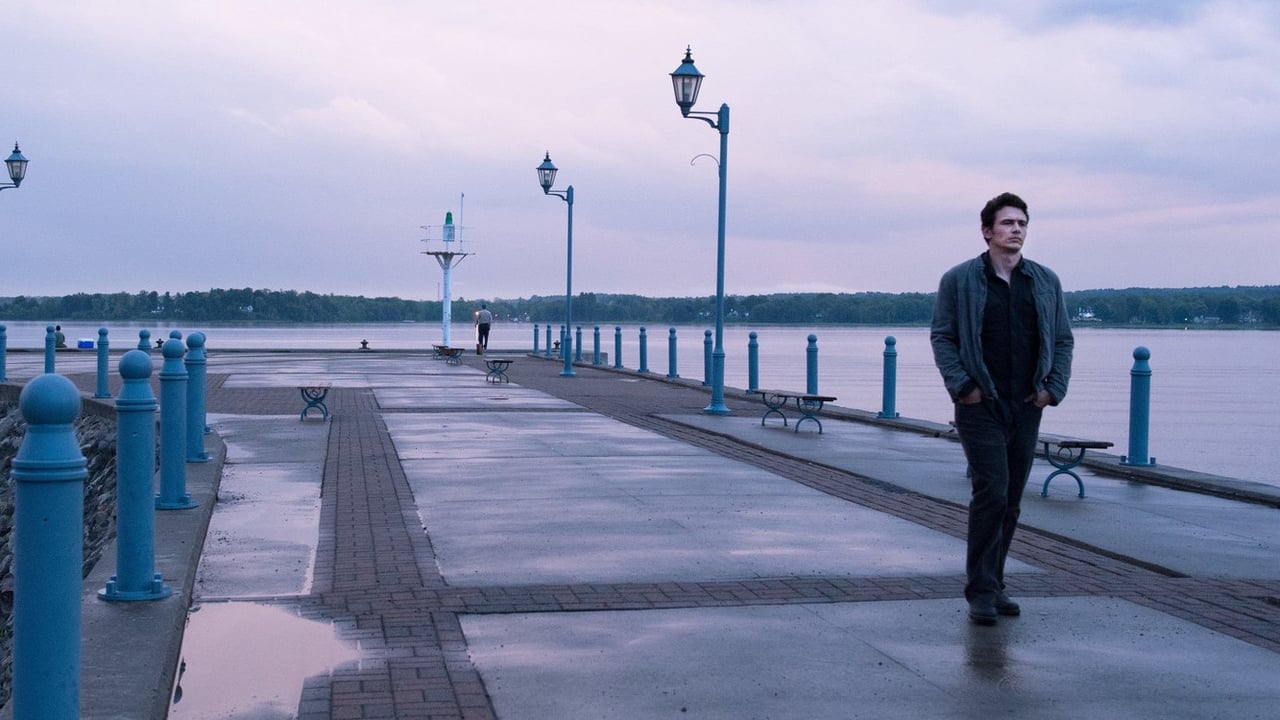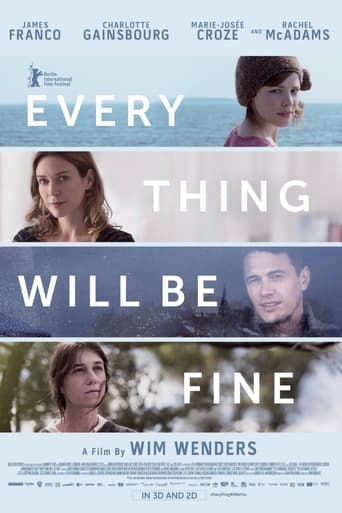

Don't waste your time. It goes no where. Kept waiting for something to make sense. Nope. Didn't happen.
... View MoreThis 2015 film by German director Wim Wenders, set in a Canada where each character speaks with a different accent, tells over a dozen years the story of a young man, writer Tomas (James Franco), who driving home stops just in time to avoid hitting a child who sleds into the road. He brings the wordless boy, Christopher (Jack Fulton), up to the house, where his mother Kate (Charlotte Gainsbourg) asks what happened to his little brother. The younger child, under the car, died. SPOILER ALERT! I will now to discuss the whole film. Over time Tomas recovers, and writes more novels. Occasionally he and Kate make contact. His relationship with Sara (Rachel McAdams) falls apart, and eventually he marries Ann (Marie-Josee Croze), a woman from his publisher's office, adopting her daughter, who's about the same age as Christopher. When the boy is sixteen (played by Robert Naylor), he writes to Tomas, by now a successful writer. After a confrontational phone call with Kate, Tomas agrees to talk to the young man, who's having trouble in school.Christopher accuses him of profiting from the accident - writing better, using the experience as material for his novels, faring better than Kate who still struggles to make ends meet. And he picks out a character in one of the novels and asserts that it is himself. Tomas, trying to maintain distance, explains that experience and imagination work together for a writer in ways not easily teased apart; he will not accept blame for the way their lives have turned out. When Tomas leaves after their conversation, the youth pursues him across an open space, then tells him to wait and fumbles in his backpack. We, and Tomas, are tensed for a weapon to come out of the pack - but instead, it's a stack of Tomas's books Christopher wants him to autograph. The moment could have gone another way - a bloody outcome all-too-familiar to the modern film-goer. These days, distant camera-shots of interiors through windows give us the sense of spying and stalking: impending violence.In the final scene, the night Tomas wins a writing award, Christopher, by now a college student, breaks into his house and urinates on his bed. When Tomas and his family get home, Ann notices the smell. Police come and investigate, but they turn up nothing. Ann and their daughter leave for a hotel, unwilling to stay where they feel violated and unsafe. As he darkens the house preparing for bed, Tomas notices a figure on his lawn. He opens the door wide, turns on his kitchen lights, sets out a soda and a bottle of beer, and sits. Christopher comes in, gets himself a beer, and they spend the night in conversation we don't hear. In the morning the young man is ready to leave. As Tomas walks out with him, they look at each other a long time. At last, Tomas embraces Christopher, who hesitates then hugs him back. Both are finally smiling as they go their separate ways.The viewer is drenched in what it feels like to have a stalker know where you live, your habits, your family and friends. This story is ultimately an antidote to that sort of creepiness. Instead of the anguished blood-satisfaction of revenge, the filmmaker shows how heartfelt and fearless reconciliation bring grace that heals.Wenders uses paired images throughout the film - during a phone call we see one speaker, then gradually in the other half of the frame the other, then the first fades, leaving darkness. Or we'll see Tomas and Sara in the same house, in different rooms, viewed from across the street - they look lonely. Wenders uses windows to look in on his characters, to expose them to the outside world, to bring light in to them (there's a beautiful shot of sunrise lighting Kate's rooms after Tomas has spent the night sitting on her couch while she sleeps, head on his lap, taking comfort in his wordless presence).Wenders also loves landscape, using it not just for mood but to give energy to scenes - after Tomas leaves Kate's house, he walks down her long driveway to where it Ts into the main road. This is the site of the fatal accident, but now it is summer, everything green and gold, and Tomas comes to where the road goes left or right, and takes one fork - no threat, no sense of death. When Christopher is a teenager, he bicycles through a field of handlebar-high yellow grass - behind him we see no crushed or broken stalks; only his gasping breath tells us how he has struggled.The presence of water includes the frozen lake where Tomas sits in a shack trying to write while his friends ice-fish, then the windy chop as Tomas and Sara stand gazing out, feeling they have lost each other. After one of his sleepless nights, Tomas stands by the shore watching a thunderstorm far across a lake. In a later scene, Tomas picks up his aging father to take him to a concert, but the old man, coming outside, sees light on the river through the trees and insists on going over. Father and son sit in a pair of chairs near the bank, looking at the water, holding hands, content.As he gets older, Wenders does more with less, letting images tell his stories. This film's use of color is in brilliant contrast to "Paris, Texas," where his camera wandered the vast drab landscape as though in search of anywhere to rest, a metaphor for the bleakness in those characters' hearts. It is as though he has decided fascination with nothingness is a young man's art - age pushes us to celebrate light, color, vitality while we can - we lose all this so soon.
... View MoreMy wife and I are movie buffs. Our times date back when films were only shown in B/W. But I'm writing this review, so I must speak for myself. I mention that because in my younger film watching years I would probably find this production from director Wim Wenders and writer Bjorn Olaf Johannessen as slow-moving, unexciting cinema. However with age, it isn't wisdom that necessarily arrives,but life experiences. The movie is about an accidental death of a child on a wintry afternoon. The driver of the vehicle, Tomas, played by James Franco, walks to the residence of the victim.... From this point on we become engaged with the child's mother, the driver's life, his relationships with his friends, his father, his agent (he's a writer) and other persons one meets. The film, as in life, just goes along at a slow pace, now and then highlighted by some excitement, tragedy, or a good event. You witness people through their various moods, faults, blessings, shortcomings,and behavior swings: in other words--- acting human. I highly recommend this film and consider it a cinematographic work of art.
... View MoreWim Wenders became known as one of the leaders of New German Cinema in the 1970s. His work includes "The American Friend", "Until the End of the World" and "Buena Vista Social Club". "Every Thing Will Be Fine" is a very different turn for him. This look at the effect that a tragedy has on a writer (James Franco) takes a while to get going. Wenders's previous movies often looked at political issues, but this is more of a psychological drama. It comes across as flat. It's not terrible, but I expect more from Wenders.Basically, I recommend Wenders's other movies. "Until the End of the World" is his best. Probably one of the greatest movies ever made.
... View More